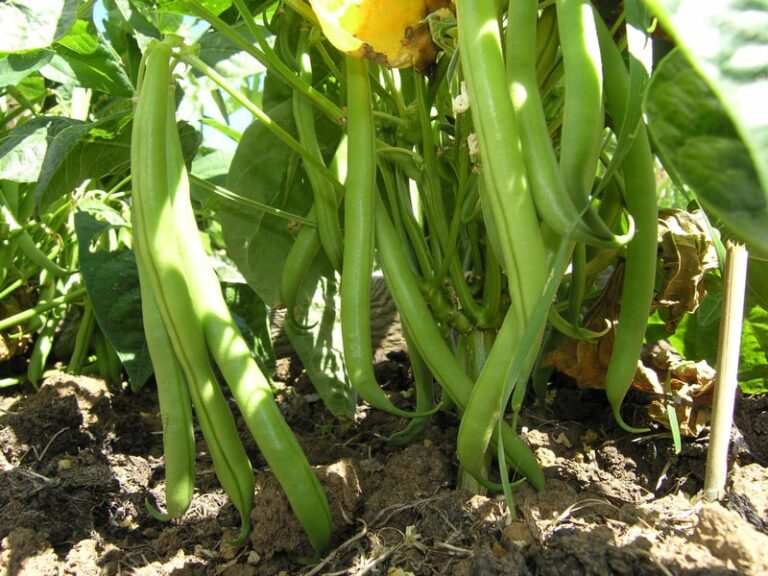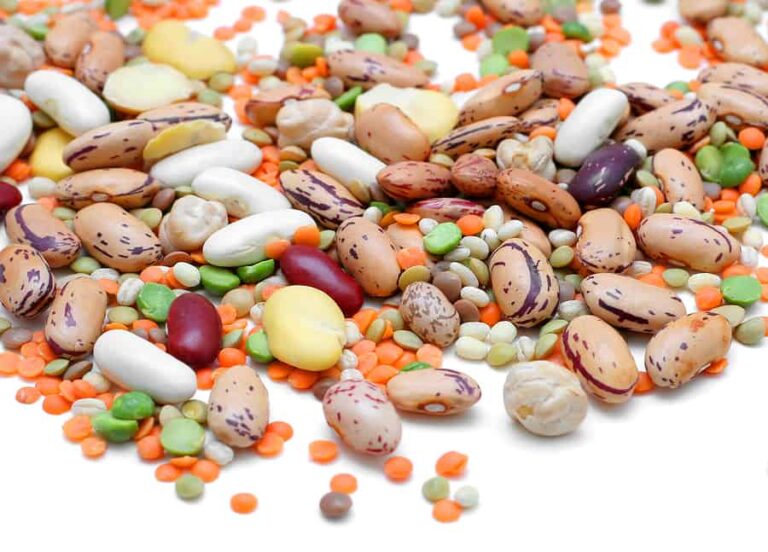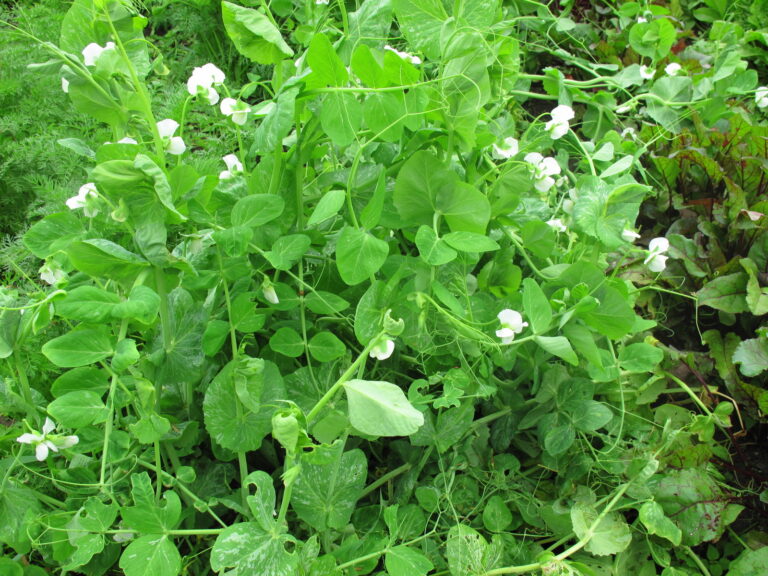Southern Peas: Essential Planting-to-Harvest Growing Tips
Southern peas—also called cowpeas, field peas, or crowder peas—are one of the most dependable warm-season crops for home gardeners. If you garden in a hot summer climate, few vegetables reward you with more productivity for so little effort. I’ve grown Southern peas for decades in both inland valleys and hot summer regions, and I return to them year after year because they’re simple, resilient, and generous.
Below is everything you need to know—from choosing varieties to planting, tending, and harvesting—based on long-term hands-on growing experience and backed by proven horticultural best practices.
What Are Southern Peas?
Southern peas (Vigna unguiculata) are not true peas. They’re warm-season legumes native to Africa, prized for their drought tolerance, nitrogen-fixing roots, and ability to produce nutritious pods and peas in extreme heat. They thrive where snap beans struggle and where garden soils need restorative fertility.
Why Grow Southern Peas? (Experience Insight)
After 30+ years of gardening in warm, dry summers, I rely on Southern peas because:
- They tolerate heat that shuts down many vegetables.
- They thrive in average or even poor soils.
- They need very little irrigation once established.
- They fix nitrogen, improving soil for the next crop.
- They produce heavy yields with minimal maintenance.
Southern peas are a cornerstone crop for regenerative gardeners and year-round growers in warm climates.
Planting Southern Peas
Best Time to Plant
Plant when soil temperatures reach 65–70°F and all danger of frost has passed.
- In hot-summer climates: April–July
- In mild coastal climates: May–August
Southern peas love heat—don’t rush planting too early.
Choosing the Right Variety
There are three main types:
1. Black-eyed peas
- Classic creamy pea with black eye
- Fast-maturing
- Great for fresh or dry harvest
Good starter variety: ‘California Blackeye No. 5’
2. Crowder peas
- Peas crowded tightly in the pod
- Rich, full flavor
- Heavy producers
Top pick: ‘Mississippi Silver’
3. Cream peas
- Small, pale peas with a mild flavor
- Excellent for fresh eating
Reliable: ‘Zipper Cream’
Best Growing Conditions
Sun
- Full sun: 8+ hours
Southern peas need heat for best flavor and pod set.
Soil
- Well-drained
- pH 6.0–7.0
- Moderate fertility
These peas tolerate poorer soils better than most vegetables—just avoid waterlogging.
Soil Preparation (Experience Tip)
I work a light compost layer into the top 2–3 inches. Over-fertile soil leads to lush vines with fewer pods.
How to Plant Southern Peas
Direct Sowing
Southern peas do best when direct-sown.
- Sow seeds 1 inch deep
- Space plants 3–4 inches apart
- Rows 18–24 inches apart
For Bush Types
Plant densely for a weed-suppressing canopy.
For Vining Types
Use a trellis or fence. Trellised peas stay cleaner and are easier to pick.
Caring for Southern Peas
Watering
Once established, Southern peas are not heavy water users.
- Keep evenly moist until seedlings are 4–6 inches tall.
- After that, water once a week or less.
- Overwatering results in lush leaves—but fewer peas.
Experience note: In hot climates, I water deeply every 7–10 days and get excellent yields.
Feeding
Avoid nitrogen fertilizers. Southern peas make their own.
Feed only if soil is very poor:
- Apply a balanced organic fertilizer lightly at planting.
- No additional feeding is needed.
Weeding and Mulching
Because Southern peas grow quickly, they shade out most weeds.
- Mulch lightly with straw or shredded leaves.
- Keep the soil surface cool and moisture-stable in early summer.
Pests and Diseases
Common Pests
- Aphids
- Cowpea curculio (in the Southeast)
- Spider mites in severe heat
Solutions:
- Wash off aphids with water
- Use row covers early if curculios are common
- Keep plants evenly watered to reduce mite stress
Diseases
- Root rot in wet soils
- Powdery mildew late in the season
Southern peas are naturally resistant to most diseases.
Harvesting Southern Peas
When to Harvest Fresh (Green-Shell) Peas
Pick when pods are:
- Plump
- Still green
- Seeds fully formed but not dry
This is the stage for classic “shell peas” used in Southern cooking.
When to Harvest Dry Peas
Let pods turn:
- Tan
- Brittle
- Fully dry on the vine
Pick before heavy rain to avoid mold.
Frequency
Pick every 2–3 days to keep vines producing. Plants shut down if pods are left to dry too early in the summer.
Experience note: Regular picking can boost yields by 30–40% in my trials.
After the Harvest: Soil-Building Benefits
Southern peas leave behind nitrogen-rich root nodules.
After harvest, I chop the vines and leave them to compost in place or till lightly into the soil. This sets up the next crop with improved fertility—an excellent pre-crop for leafy greens or fall brassicas.
Troubleshooting Common Problems
Lots of leaves, few pods
Too much nitrogen or excessive watering.
Pods small or poorly filled
Heat waves + low soil moisture. Increase deep watering.
Plants yellowing early
Compacted or waterlogged soil; improve drainage.
Final Growing Tips (From Experience)
- Plant a second sowing in midsummer for fall harvests.
- Choose bush types for small gardens and raised beds.
- Use trellises to save water and reduce disease pressure.
- Let some pods dry for next year if you want your own seed.
Southern peas reward even minimal care—they’re truly a “set it and forget it” summer crop.
Southern Peas Learning Hub
Start Here:
- How to Plant, Grow, and Harvest Southern Peas: A Complete Guide – Overview and complete guide.
- Southern Peas: Essential Planting-to-Harvest Growing Tips – Tips you can use today.
Planning & Preparation
- About Southern Peas: History, Types, and How They Differ from Other Beans – Background, uses, and distinction from other legumes.
- The Best Location for Southern Peas: Soil, Sun, and Garden Bed Prep – Soil, sunlight, and bed preparation.
- When to Plant Southern Peas: Timing for Spring, Summer, and Successive Crops – Sowing schedules for peak yield.
- The Best Southern Pea Varieties: Black-Eyed, Crowder, and Purple Hull Peas – Variety selection based on climate, space, and flavor.
Planting & Early Growth
- How to Plant and Space Southern Peas for Maximum Yield – Planting depth, spacing, and row management.
- How to Grow Southern Peas in Containers: Tips for Small-Space Gardens – Container growing guidance for limited spaces.
Care & Maintenance
- How to Water and Fertilize Southern Peas for Healthy Vines and Pods – Optimal irrigation and feeding practices.
- Seasonal Care Guide for Southern Peas: Weeding, Training, and Midseason Maintenance – Midseason tasks and vine management.
- The Best Companion Plants for Southern Peas (and What to Avoid) – Planting companions for productivity and pest reduction.
Pests & Disease Management
- Southern Peas Pests and Diseases: Identification, Prevention, and Organic Controls – Recognizing problems and implementing organic solutions.
Harvesting & Preservation
- How to Harvest Southern Peas at Every Stage: Shelling, Snaps, and Dry Peas – Picking at different maturity stages.
- How to Store and Preserve Southern Peas: Freezing, Drying, and Long-Term Keeping – Preservation methods for year-round use.





